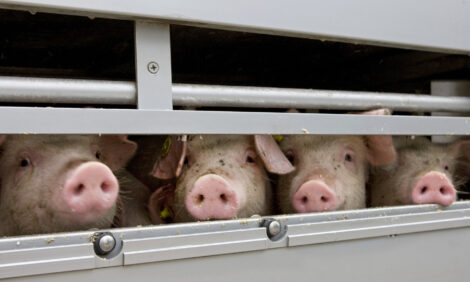



Market Preview : Corn Crop Poised to Be Second Largest
US - Weekly US Market Preview provided by Steve R. Meyer, Ph.D., Paragon Economics, Inc.
USDA increased estimated harvested acres from 78.9 million to 79.3 million after “resurveying” many areas in the aftermath of June’s flooding across the Corn Belt. Recall that the survey for the June 30 Acreage Report was conducted in the midst of those floods, and the survey’s timing led USDA to revisit those producers in order to ascertain the impact. USDA also raised its estimate of harvested soybean acres from 72.1 to 73.3 million.
The larger factor, though, for the higher projected corn crop is an estimated yield of 155 bushels, up from 148.4 bushels in the July report and above the long-term trend yield of 153.2. That yield would be the second-highest ever and reflects crop conditions that have steadily improved during July.
The combination of higher harvest acres and yield now pegs the 2008 corn crop at 12.288 billion bushels – 6% lower than last year’s record. Even with increases in forecasted ethanol and feed/residual usage (by 150 million and 100 million bushels, respectively), this estimated crop would increase 2009 carryout stocks to 1.133 billion bushels or just over 8% of total use. When combined with the mid-point of USDA’s forecast price range ($4.90 to $5.90/bu.), this stocks-to-use ratio indicates that USDA is working off the same corn demand curve they used in June – but a significantly higher one than was used for forecasts for the 2007 crop (see Figure 2).

Unease Remains over Corn Crop Maturity
Higher acres and higher yields mean more supply and lower prices, right? That’s what economic theory says, but the action of futures prices since Tuesday tells us something else is at work here. December corn futures have gained $0.56/bu. (over 10%) since Monday’s close. Why? Technical buying is one explanation, but another is widespread unease with that yield forecast relative to the maturity level of this crop. Only 17% of the acres were shown in the dough stage as of last Sunday compared to a five-year average of 32%. Immature crops, even if they look good, have proven to frequently produce a final yield that is lower than USDA’s August estimate. I think this week’s corn trade confirms those fears.
Pork Exports Stupendous
The good news this week was something that virtually everyone already knew – pork exports have been stupendous! June pork exports were 111% larger than one year ago, and brought year-to-date (YTD) total pork exports to just over 1.8 billion pounds, 67% larger than last year (See Figure 3).

The star market was once again China/Hong Kong with June shipments there totaling just over 96 million pounds, product weight, 552% larger than last year. June’s shipments put YTD pork trade with China at 427 million pounds, 483% larger than in 2007. Japan was the second-largest market again in June but remains our largest market, YTD, at 469 million pounds, 18% larger than last year.
U.S. exports to other markets have also performed well this year. Year-to-date shipments to Russia are up 138%, while trade with Mexico and Canada has grown by 29% and 25%, respectively.
The value of U.S pork exports through June has grown by 57%. China/Hong Kong also leads in this category with shipments there growing by 681% this year. The value of shipments to Russia has grown by 157% so far in 2008. Note that Russia’s percentage growth for value is larger than its volume percentage growth, indicating that this historically hyper-price-sensitive market is demonstrating a willingness and ability to pay more for pork products.
Pork Variety Meat Sales Also Rise
Year-to-date pork variety meat exports finished June at 69.1% higher in volume and 72.8% higher in value (see Figure 4). This growth has been a major driver of record by-product values, which have contributed roughly $25/head to hog values in recent weeks.

China/Hong Kong is also the leading growth market for U.S. variety meats and has, as of June, surpassed Mexico as the largest customer for pork variety meats. Mexico maintains a slim lead as the highest-value market for variety meats. Variety meat exports to Japan, South Korea and Russia have grown substantially this year as well, increasing by 198%, 162% and 135%, respectively.










